It can’t be easy for any brand to replace its most successful game-improvement iron ever, or a tour iron that won 3-majors in a 14-month span (including back to back US Opens), or even a middle of the market forged iron that’s the most versatile iron in its catalog. Trying to replace all three in a single release cycle is another thing entirely.
That’s the challenge Mizuno is facing with its JPX919 iron lineup.
Damn. Good luck with that.
One could easily build a case for letting the entire JPX900 lineup ride for another season, maybe two, but the golf equipment world brings with it certain business realities, and that means even a company like Mizuno needs to make new clubs – even when the old ones are enjoying one hell of a run.
JPX919: It Could Be Better
There’s a video floating around the interwebs that features Mizuno R&D Engineer turned Brand Manager for Golf, Chris Voshall, stepping the viewer through the clubs in his bag. There are certainly some surprises with Chris’s gear, but among the most eye-opening bits of wisdom is this:
“With every club that comes out… there’s something that could be better about it.”
Could.
He goes on to explain that, from an engineer’s perspective, there’s a lot you can do to make a club better, but from a golfer’s perspective some of those things may not actually matter. It’s a sentiment that’s been shared one way or another by others in the industry. As it relates to the new JPX919 family of irons it really boils down to this:
There is a list of design and engineering reasons why the JPX919 could be better, but it’s up to you as a golfer to determine if those things matter enough for you to replace what’s currently in your bag.
JPX919 could be better.
The JPX Design Evolution
Forgetting – as most at Mizuno would likely prefer – the JPX EZ irons, the modern JPX story is one of design evolution. While the JPX850 was, for all intents and purposes, a clean iron, the standard 850 was a bit ornamental. It’s bold-ish blue badge certainly didn’t look out of place next to other offerings in the game improvement category, but it was a bit more ornate than your typical Mizuno iron.
For the JPX900, Mizuno took a more refined approach, raising the sophistication level to nearly that of MP, and it wasn’t a stretch to think that some golfers, even some traditional Mizuno golfers, might prefer the JPX aesthetic. As we’ve discussed before, while MP plays to tradition, the JPX is designed to appeal to a modern, more aggressive golfer. You don’t have to be strong like Brooks, but there’s an edginess, both metaphorically and literally, to the line that doesn’t exist with MP.
With the JPX919, Mizuno is bringing elements of dynamism and simplicity to the design. The simplicity part is obvious enough. The irons are clean…cleaner still than JPX900, and there’s nothing that’s overly ornate or out of place. The dynamism part seeks to the use light and reflections to bring movement to an otherwise static object. Elements of the JPX design, like the radial pattern in the badge, appear to be in motion as light moves across the cavity. The linear etching in the badge transitions from thinner to thicker to symbolize the structures created by Mizuno’s patented Grain Flow Forging HD process where grains of 1025E mild carbon steel are more densely aligned behind the hitting area.
An aesthetic approach rooted in dynamism doesn’t bring any performance advantage, but it speaks to Mizuno’s desire to create clubs that blend premium performance with thoughtful design.
The performance element of the JPX919 story begins with engineers looking for opportunities for improvement. As is often the case, the answer boils down to mass distribution. How can we optimize weighting? How can we take it away from where it isn’t needed and relocate it in a way that will improve performance?
As we answer those questions, we’ll also touch on a couple of things you don’t see very often. The first is that with the three irons in the JPX lineup Mizuno will again be using three different materials; each selected to meet the specific demands of a JPX919 iron model.
JPX919 Tour
While the word gets thrown around far too often, the JPX900 Tour exits the market achieving near iconic status. Without any pay for play attached, it was in Brook’s Koepka’s bag for 3 Majors Championship victories in a 4-month span. In the modern era, how many clubs get put out to pasture having never lost a US Open? At a minimum, 919 Tour becomes the sequel to a modern classic that helped change perceptions on tour while helping Mizuno reach a different type of golfer.
It should go without saying that Mizuno hopes to continue its tour momentum with the 919.
The 919 is the first JPX series to leverage Mizuno’s enhanced Grain Flow Forged HD process, which as we’ve covered a few times now, limits the amount of excess material that spills out of the lower part of the mold during forging. The end result is a more tightly packed grain structure in the hitting area, which ultimately results in better feel.
From a materials standpoint, Tour is distinguished from the rest of the JPX900 lineup by the use 1025E Mild Carbon steel. It’s the same material used throughout Mizuno’s MP line. While Mizuno could have used 1025 Boron, there’s no practical performance reason to do so since nothing in the 919 Tour spec demands more distance. Any inclusion of Boron in the 919 Tour would have been strictly for marketing purposes.
The primary structural difference between the 919 and the previous generation is the addition of what Mizuno calls a Stability Frame. In simple terms, Stability Frame is a means to relocate mass where it isn’t needed, specifically the heel portion of the club, to areas where it’s more purposeful.
The challenge is particularly difficult in a compact iron where a healthy percentage of mass is already allocated to the hosel. Typical workarounds include shortening the hosel or increasing the blade length, but both have performance implications, and neither is likely to play well on tour.
Mizuno’s fix was to push the cavity deeper towards the hosel. In fact, the signature design feature of the entire JPX919 lineup is a cavity that extends beyond the typical hosel boundary. In early designs, Mizuno was a bit too aggressive and had to dial it back to maintain the structural integrity of the iron.
As you’d expect, Mizuno took some of that extra mass and used it to pull the center of gravity down for higher launch, while adding mass towards the toe helped shift the sweet spot closer to the true center of the clubface. The end result is a club that launches a bit higher and spins a bit less than the MP-18 Split Cavity and MMC.
Mizuno describes the JPX919 Tour as offering a refined shotmaker’s profile. It’s a description that encompasses the compact shape, a tour proven sole with a cambered leading edge, its relatively minimal offset, and a topline that’s been reduced by about 10%. Thus far, the new design has been exceptionally well-received by PGA Tour players, including Brooks Koepka.
Despite being a legitimate tour iron, the JPX919 Tour is not an unforgiving club. Mizuno uses a forgiveness metric called Sweet Area, which is the area of an ellipse representing the combined measured heel to toe and top to bottom MOI of an iron. The key point here is that the metric is born from measurements of actual parts and wasn’t created during the marketing department’s weekly meeting.
Under this metric, the 919 Tour is nearly as forgiving as the MP-18 MMC, a tick more forgiving than both the Callaway APEX CF16, Titleist AP3, and TaylorMade’s MP4. What’s notable is that 919 achieves this level of forgiveness, despite its compact tour profile, specifically, it’s shorter blade length.
Also new across the entire JPX919 lineup is what Mizuno calls a Pearl Brush finish. The flat satin on the 900, accentuated the 900’s clean lines, but it didn’t wear as well as Mizuno would have liked. The new finish offers chrome plating with a pearl (whitish) finish. It’s still zero glare, but it’s a touch brighter, it softens the strong lines in direct sunlight, and most importantly, it’s more durable.
JPX919 Tour Specs
Mizuno JPX919 Tour Specifications
| Club No. | 3 | 4 | 5 | 6 | 7 | 8 | 9 | PW |
|---|---|---|---|---|---|---|---|---|
| Club Length | 39 | 38.5 | 38 | 37.5 | 37 | 36.5 | 36 | 35.5 |
| Swing Weight | D2 | D2 | D2 | D2 | D2 | D2 | D2 | D3 |
| Loft | 21 | 24 | 27 | 30 | 34 | 38 | 42 | 46 |
| Lie | 59.5 | 60 | 60.5 | 61 | 61.5 | 62 | 62.5 | 63 |
| Bounce | 2 | 2 | 2 | 3 | 3 | 4 | 5 | 6 |
| Offset | 0.13 | 0.126 | 0.122 | 0.118 | 0.114 | 0.11 | 0.106 | 0.102 |
Taking a look at the specifications, you may have noticed that while lofts are unchanged from the 900 series, Mizuno has increased shaft length by ¼”. We can quibble over whether or not that was necessary, but Mizuno felt it needed to get inline with where the rest of the industry is. You can expect the new lengths to be standard across all new Mizuno models moving forward.
The stock shaft in the 919 Tour is the TrueTemper Dynamic Gold 120. Note that Mizuno is using the real aftermarket taper tip version of the shaft with the heat transferred shaft labels. This isn’t the money-saving (for the OEM) parallel-tip, cigar band version found in some other lineups.
Also noteworthy; the stock grip is Golf Pride’s MCC +4 (Gray/Black). This is the first time this grip has been offered as stock in any lineup.
As with the last few iterations of Mizuno’s lineup, there are no upcharges for any iron shaft or grip in the Mizuno catalog.
Available for right-handed golfers only, retail Price for the JPX919 Tour is $1200 per set or $150 per iron.
JPX919 Forged
“If we were only allowed to make one iron, this is the one we would make. It checks all the boxes, it’s the most widely accepted of all our clubs. It blends with MMC, Fli-Hi, Hot Metal, Tour, anything…” – Chris Voshall, Brand Manager for Mizuno Golf
Dating back to the JPX850 Forged, the selling point for the iron occupying this slot in the Mizuno lineup has been balanced performance. It offers a competitive amount of ball speed, plenty of forgiveness, and the feel and feedback Mizuno players have come to appreciate, if not demand. It’s neither too big, nor too small for a healthy percentage of the market.
The JPX919 Forged continues that tradition, albeit with a bit more refinement.
Unlike the Tour model, the JPX919 Forged is constructed from Mizuno’s 1025 Boron. The material is 30% stronger than 1025E, and that allows Mizuno to make the face, thinner, hotter, and faster. You know the drill. While JPX919 Forged isn’t a distance iron per say, it can hold its own in a segment of the market that demands a bit of extra ball speed.
Like the 919 Tour, the Forged model features the new Stability Frame construction, and as with Tour, Mizuno leveraged that design to improve better optimize launch conditions.
The biggest improvement over the JPX900 Forged is found under the hood. A new Microslot milling technique effectively increased the size and depth of the undercut cavity hidden behind the cavity badge. The result is increased COR across the entire face, and a lower and deeper center of gravity in the long in mid irons. For those who love to talk CT measurements, the new design keeps the ball on the face an extra 18 microseconds, producing almost 1 MPH more ball speed.
Comparing the JPX919 Forged to others in its class, it’s significantly more forgiving than Apex CF16 and Epic. It’s a bit more forgiving than both P790 and Rogue Pro. Your best point of comparison is the Titleist AP1, which like JPX919 Forged, sits between Rogue and Rogue X under Mizuno’s forgiveness metric – and like the Tour model, the JPX919 has the shortest blade length of the competitive set, though it’s not significantly shorter than either Apex CF16 or P790.
It should be noted that the 919 is just a touch less forgiving than the previous model. It’s the consequences of a slightly shorter blade length.
For golfers who prefer the shape of a players iron – or at least like to get as close to compact as they safely can – and aren’t interested in compromising on forgiveness, JPX919 Forged hits the sweet spot.
Performance
Prefaced with the acknowledgement that I’ve yet to have an OEM show me data that suggests its product is inferior to its competitors’, in Mizuno’s testing (using 6-irons), the JPX919 Forged produced longer carry than the PING G700, Callaway Rogue (and Rogue Pro), and every M in the TaylorMade catalog, despite lofts that are 1°-3° weaker than all off the above. Interestingly, the 919 Forged produced a lower, more penetrating flight, but only M3 spun more (and the difference was marginal). With 919 Forged, Mizuno’s goal was to create a comparatively higher spinning iron that wasn’t too high spinning.
Un-Jacked Lofts
Invariably when golf companies talk about distance gains in irons, a quick review of the specs reveals that some measure of loft-jacking has played a role. To what I suspect will be the delight of many, Mizuno actually rolled back the lofts on the JPX919 Forged. Let me say that again, instead of making its irons stronger, because of the ball speed gains, Mizuno was able to make the lofts 1° weaker (relative to JPX900 Forged), maintain, if not increase distance, and improve playability – specifically as it relates to the JPX919 Forged’s ability to hold greens.
This, my friends, is a good thing.
919 Forged Specs
Mizuno JPX919 Forged Specifications
| Club No. | 4 | 5 | 6 | 7 | 8 | 9 | PW | GW |
|---|---|---|---|---|---|---|---|---|
| Club Length | 38.5 | 38 | 37.5 | 37 | 36.5 | 36 | 35.5 | 35.25 |
| Swing Weight | D2 | D2 | D2 | D2 | D2 | D2 | D3 | D3 |
| Loft | 22 | 25 | 28 | 32 | 36 | 41 | 46 | 51 |
| Lie | 60 | 60.5 | 61 | 61.5 | 62 | 62.5 | 63 | 63 |
| Bounce | 1 | 2 | 2 | 3 | 4 | 5 | 6 | 7 |
| Offset | 0.161 | 0.152 | 0.142 | 0.132 | 0.122 | 0.112 | 0.102 | 0.093 |
The stock shaft for the Mizuno JPX919 Forged is the TrueTemper Dynamic Gold 105. Again, it’s 100% the same as the aftermarket version. The stock grip is Golf Pride’s MCC +4 (Blue/Black), and again, there are no upcharges for any shaft or grip in the Mizuno catalog.
Available for both right and left-handed golfers, retail price for the JPX919 Forged is $1300 per set or $162.50 per iron.
JPX919 Hot Metal
As I hinted at the beginning of this story, the JPX900 Hot Metal is Mizuno’s best-selling iron in the game-improvement category ever. It’s not a category where Mizuno is traditionally strong, but Hot Metal was a breakthrough iron of sorts for the brand, and Mizuno is certainly hoping that the JPX919 Hot Metal can build on that momentum.
Apart from it’s larger size, there are two major distinctions between the Hot Metal and the rest of the JPX919 family. The first is that it’s cast and not forged. That has to do with its footprint and its increased emphasis on speed. The second major difference is that instead of using 1025 steel as its core material, its constructed from Chromoly 4140M. Chromoly is stronger and more responsive than mild carbon (1025), it flows well in the casting processes, and because it’s softer than other traditional casting materials, it offers outstanding feel.
Long story short, the materials and the construction used are designed to maximize ball speed. What differentiates the Hot Metal from some others in the category is that Mizuno isn’t being reckless in pursuing speed gains. The goal was to design a fast iron that maintains a controllable landing angle, something Mizuno believes is deeply missing in the category.
Like the 919 Tour and 919 Forged, the 919 Hot Metal features Stability Frame construction. With Hot Metal, however, Mizuno has added 5 sound ribs to help dial-in sound frequencies to createa consistent feel throughout the set. What we’re really talking about is a design feature that seeks to replicate the feel of a grain flow forged iron in a cast design – to whatever extent that’s possible.
Big picture, the JPX919 Hot Metal is (as the name implies) a hot iron that still speaks to everything Mizuno is about.
To that end, the Stability Frame design allowed Mizuno to leverage a larger multi-thickness face to increase the COR area (the area of the face that maintains a COR above .800) significantly compared to not only the 900 Hot Metal, but also competitors like M4, AP1, G400, and Rogue.
While Hot Metal isn’t the absolute most forgiving iron on the mainstream market, Mizuno is content with it being the most forgiving iron in its lineup. PING’s G400 and G700 best the new Hot Metal for total MOI, but the new Mizuno offering is appreciably more forgiving than Rogue, Rogue X, M2, M4, and to a lesser extent AP1. As has become our recurring theme, Mizuno is offering greater forgiveness in a more compact profile.
Some will love that, but it’s also true that some will find that the smaller footprint doesn’t give them the same confidence they get from a larger iron design.
When considering irons in this category the question you should be asking is whether your goal is to maximize distance or shoot lower scores. I’m not saying the two are mutually exclusive, but I don’t think you’d find much correlation either. The reality is that many of the options in the game-improvement and super game-improvement categories are designed to impress on the launch monitor and on the driving range, but not necessarily on your scorecard.
Hot Metal Specs
Mizuno JPX919 HotMetal Specifications
| Club No. | 4 | 5 | 6 | 7 | 8 | 9 | PW | GW |
|---|---|---|---|---|---|---|---|---|
| Length | 38.5 | 38 | 37.5 | 37 | 36.5 | 36 | 35.5 | 35.25 |
| Swing weight | D2 | D2 | D2 | D2 | D2 | D2 | D2 | D3 |
| Loft | 20 | 23 | 26 | 30 | 35 | 40 | 45 | 50 |
| Lie | 60 | 60.5 | 61 | 61.5 | 62 | 62.5 | 63 | 63 |
| Bounce | 0 | 0 | 0 | 1.5 | 2.5 | 3.5 | 5 | 6 |
| Offset | 0.228 | 0.209 | 0.189 | 0.177 | 0.165 | 0.146 | 0.126 | 0.114 |
The stock shafts for the JPX900 Hot Metal are the Nippon N.S. Pro Modus3 105 (steel) and Project X LZ (graphite). Stock grip is the Golf Pride MCC +4 (Gray Black). Available for both right and left-handed golfers, retail price is $1000 per set or $125 per iron.
JPX919 Wedges
Also released as part of the 919 series is the JPX919 wedge.
While the JPX919 Gap Wedge is the set wedge for the 919 Hot Metal, the new wedge isn’t designed exclusively to pair with the Hot Metal. It blends well with the JPX919 Forged, and can hold its own as a standalone offering.
The key to that last bit is that the JPX919 wedge shares a good bit of its design with the S16. The shape of the gap wedge is actually a bit of a blend between the S18 and the JPX919 Pitching Wedge, while the Sand and Lob wedges were inspired by the S18. Like Mizuno T7 and S18 wedges, the JPX919 feature loft specific, milled grooves to help dial-in ideal launch and spin at each loft.
Mizuno describes the JPX919 sole grind as moderate. It’s a good middle of the road offering with some versatility. Sole widths widen with loft to improve playability.
The JPX919 wedge is cast from X30 soft steel. The material is similar to the 8620 steel used in competitor wedges, and while Mizuno purists may feel like they’re losing something in a cast wedge, I’d simply point out that the #1 wedge both on tour and at retail is cast, and nobody seems to be suffering for it.
JPX919 Wedge Specs
JPX919 Wedge Specifications
| Club | GW | SW | LW |
|---|---|---|---|
| Loft | 50 | 55 | 60 |
| Swing Weight | D3 | D3 | D3 |
| Lie | 63 | 63 | 63 |
| Bounce | 6 | 13 | 9 |
| Offset | 0.114 | 0.102 | 0.102 |
Retail Price for JPX919 wedges is $125 each. Stock shaft offerings are the same as the JPX Hot Metal; Nippon Modus 105 (steel), Project X LZ (graphite). Available for both right and left-handed golfers.
BONUS – S18 Blue Wedges
Finally, we have a line extension to the Mizuno S18 family. We’re not going rehash the technical details here. If you missed our story on the S18, you can find it here. We’re talking about the same wedge, with a new finish option.
The new Blue Ion finish is a bit glossier and a bit shinier than the Blue Ion used on the T7. It’s actually closer to what Mizuno used on the S5. Like Mizuno’s Black Ion (and unlike PVD) the blue finish is extremely durable and won’t rub or flake off after just a few rounds.
The S18 Blue Ion Wedge will be available for right-handed golfers only in all current S18 bounce and grind configurations. Retail price is $149.
Retail availability for the Mizuno JPX919 family begins September 10th, 2018.
To see more, visit the Mizuno JPX919 Gratuitous Picture Thread in the MyGolfSpy Forum






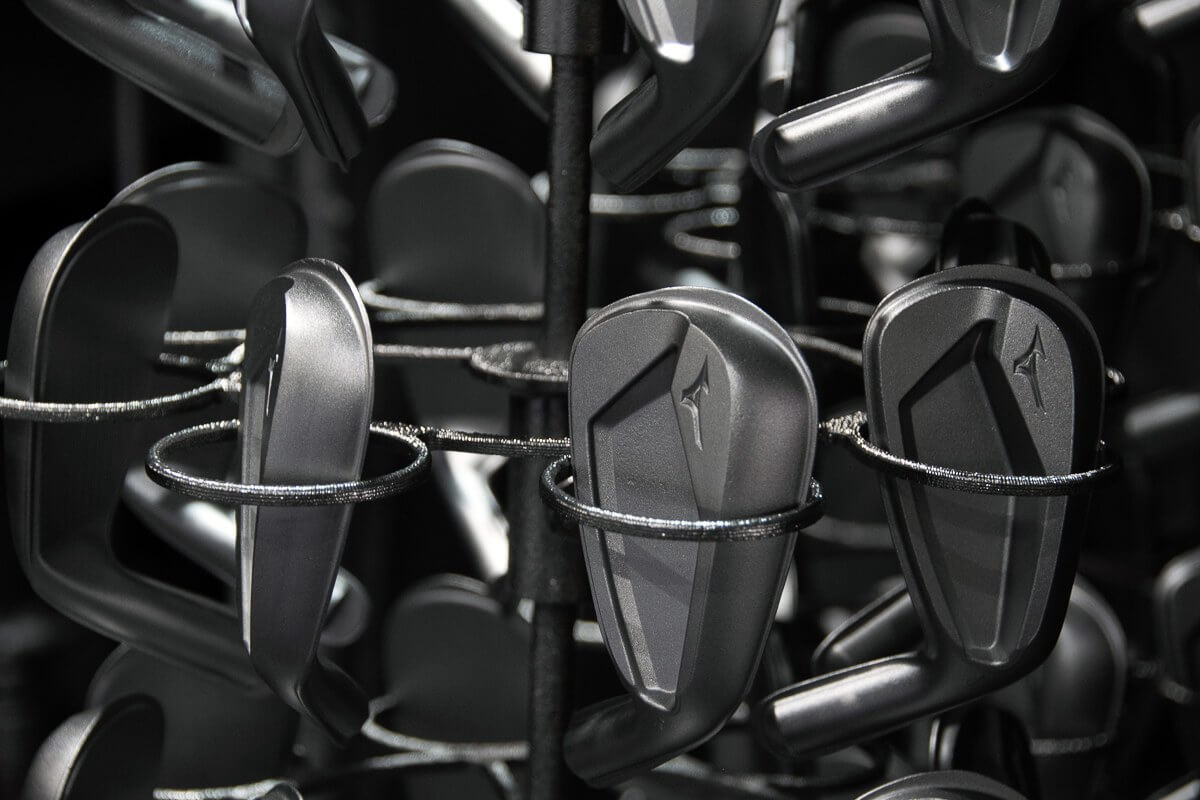



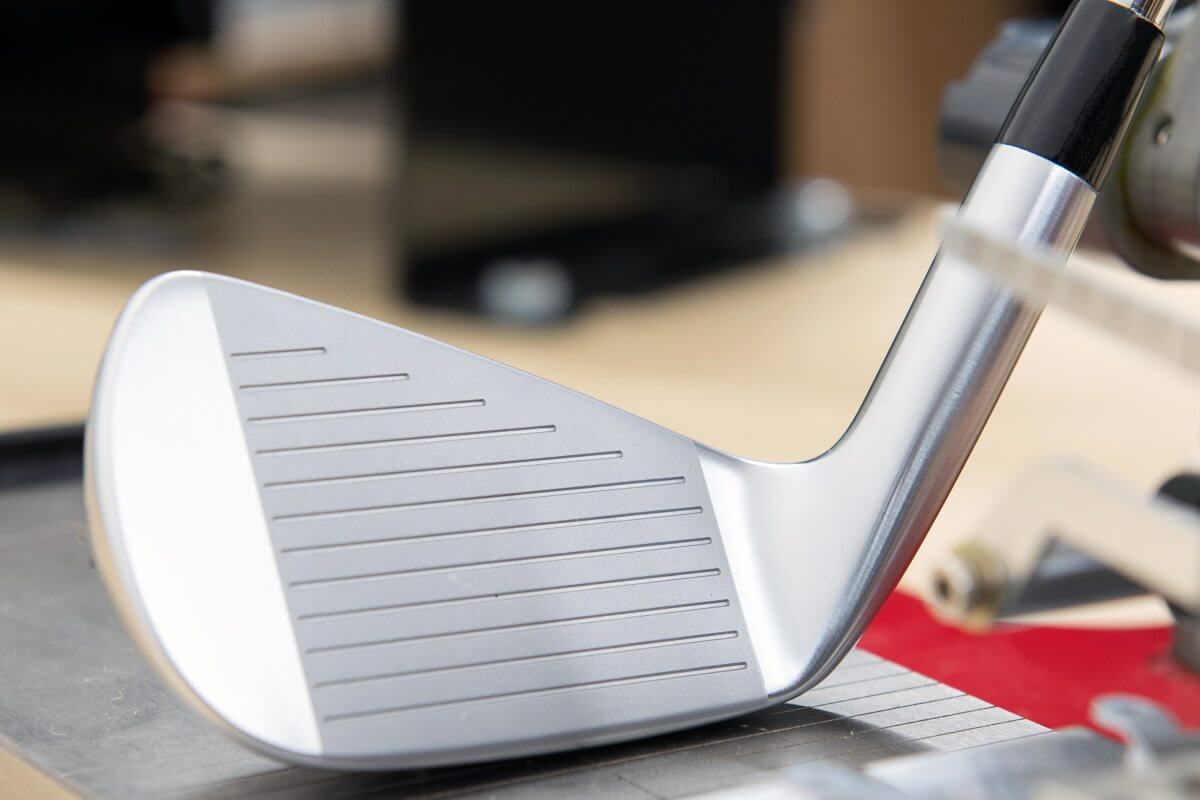

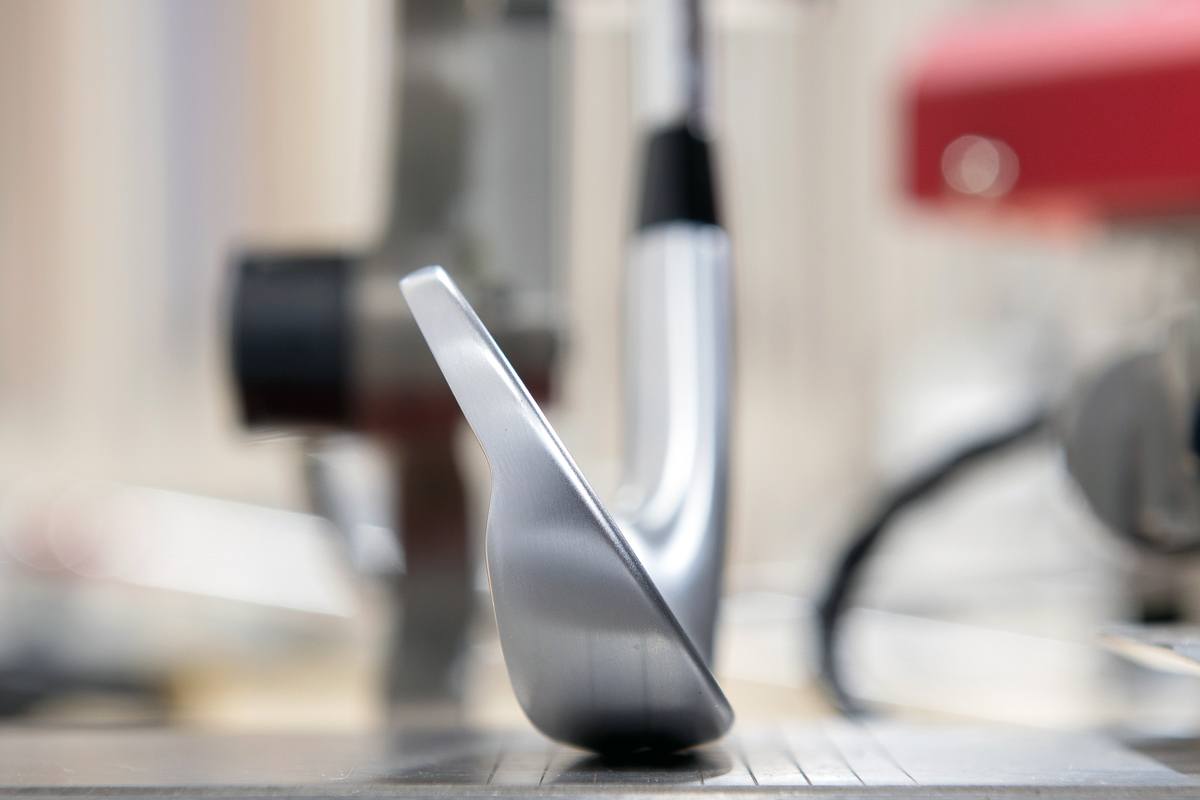
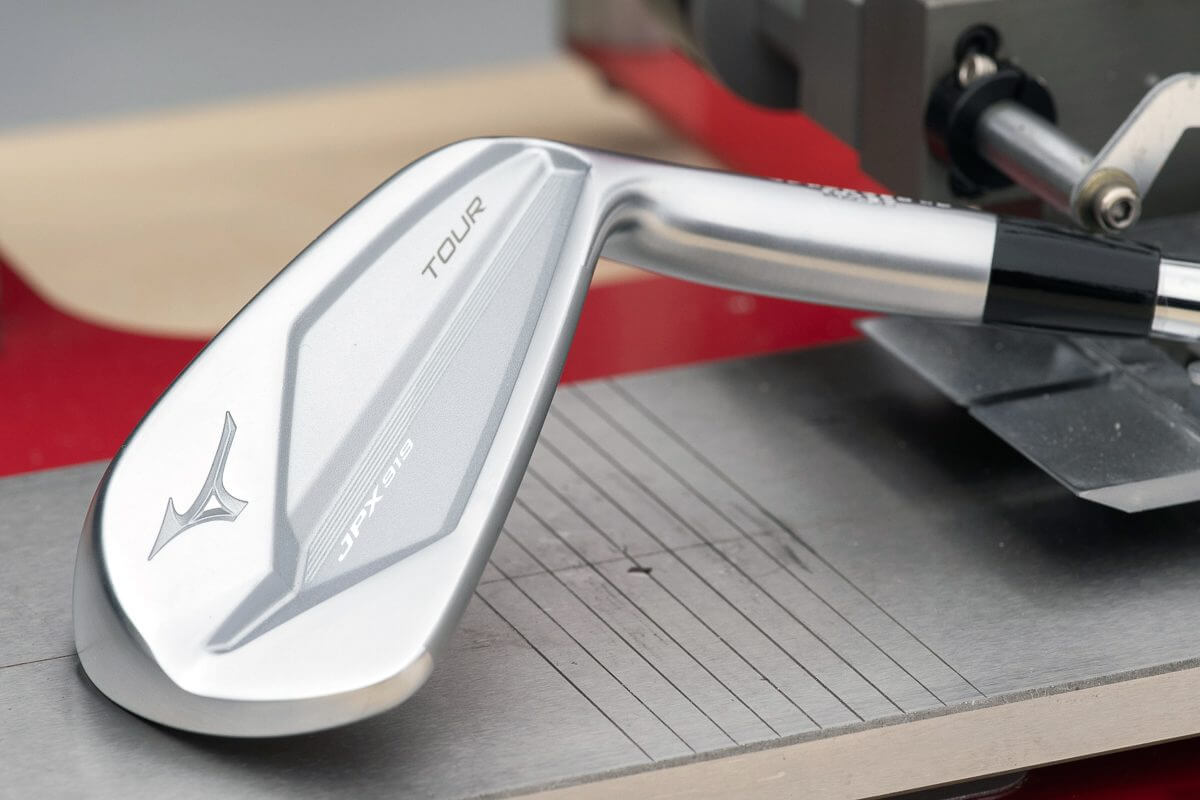

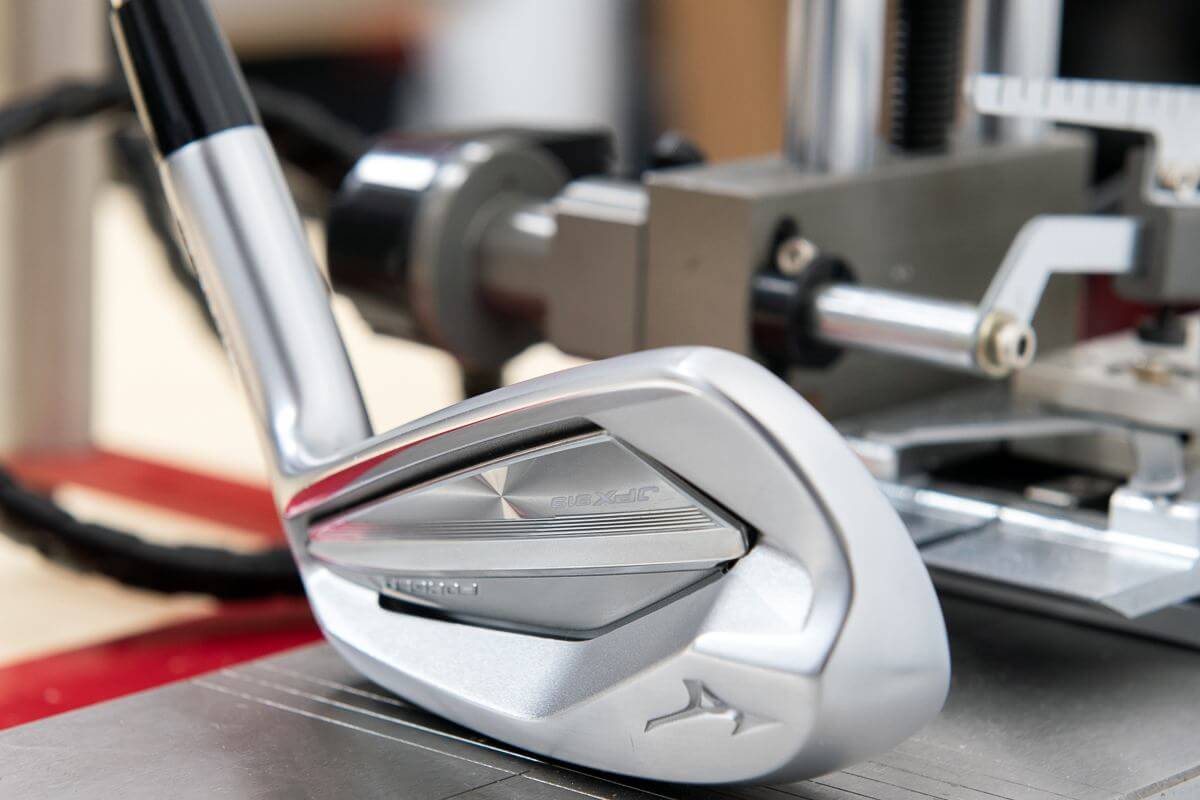

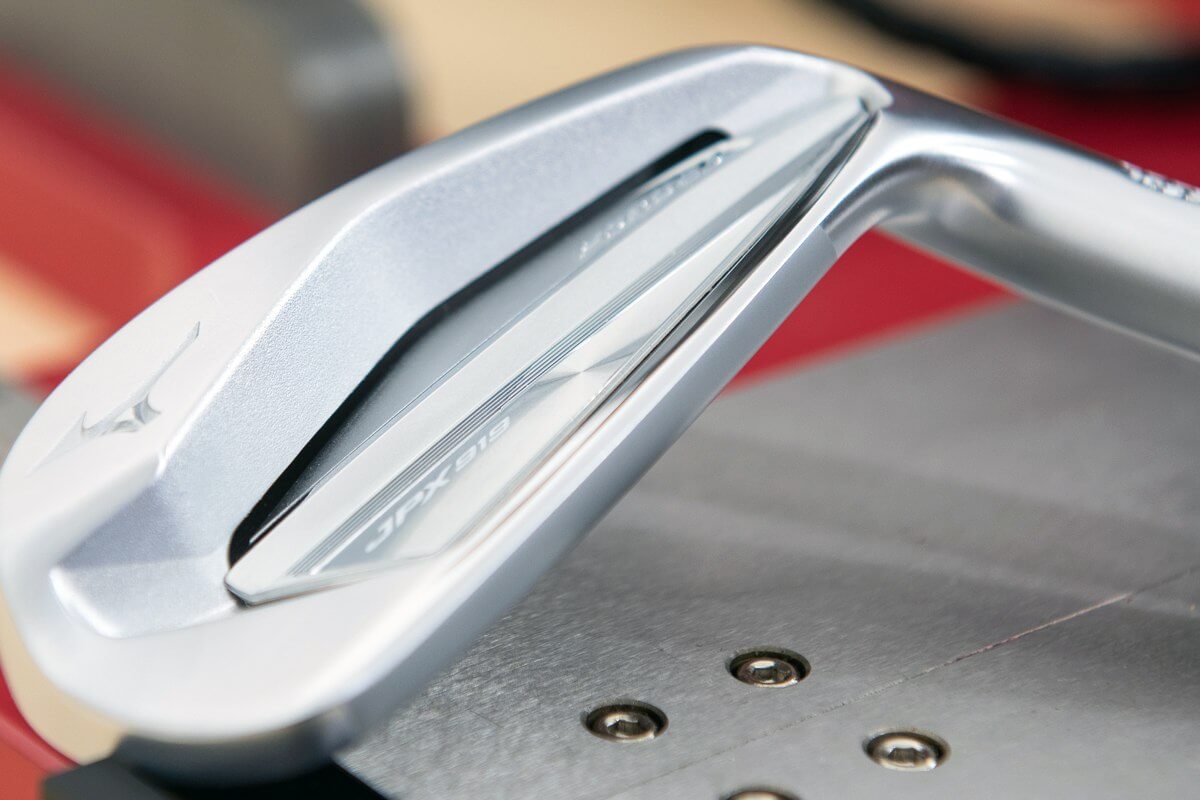





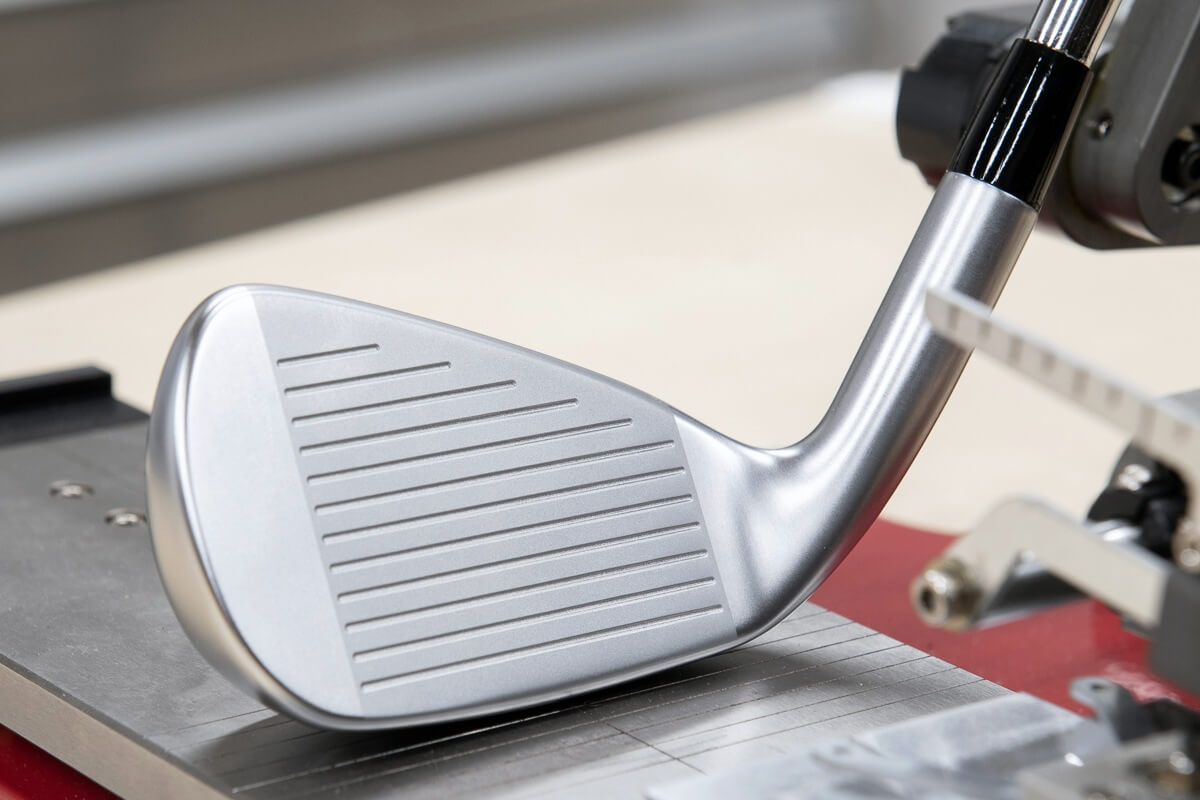

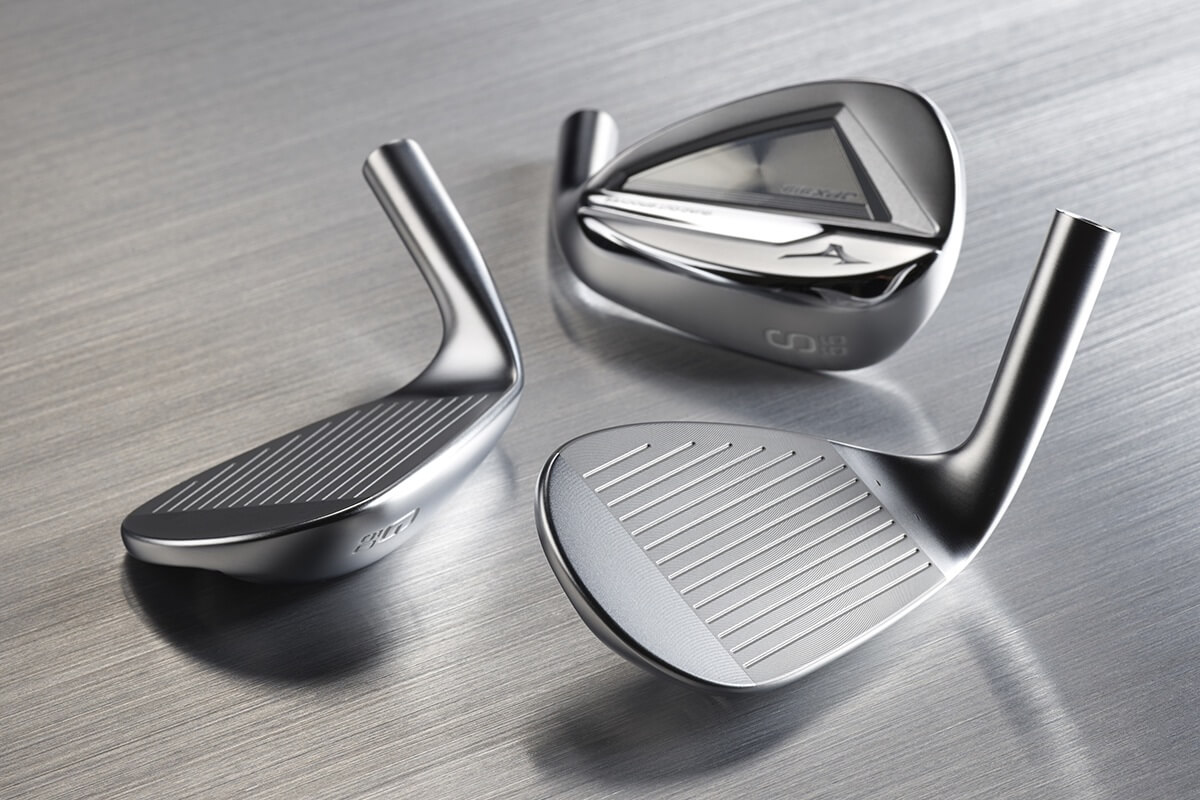
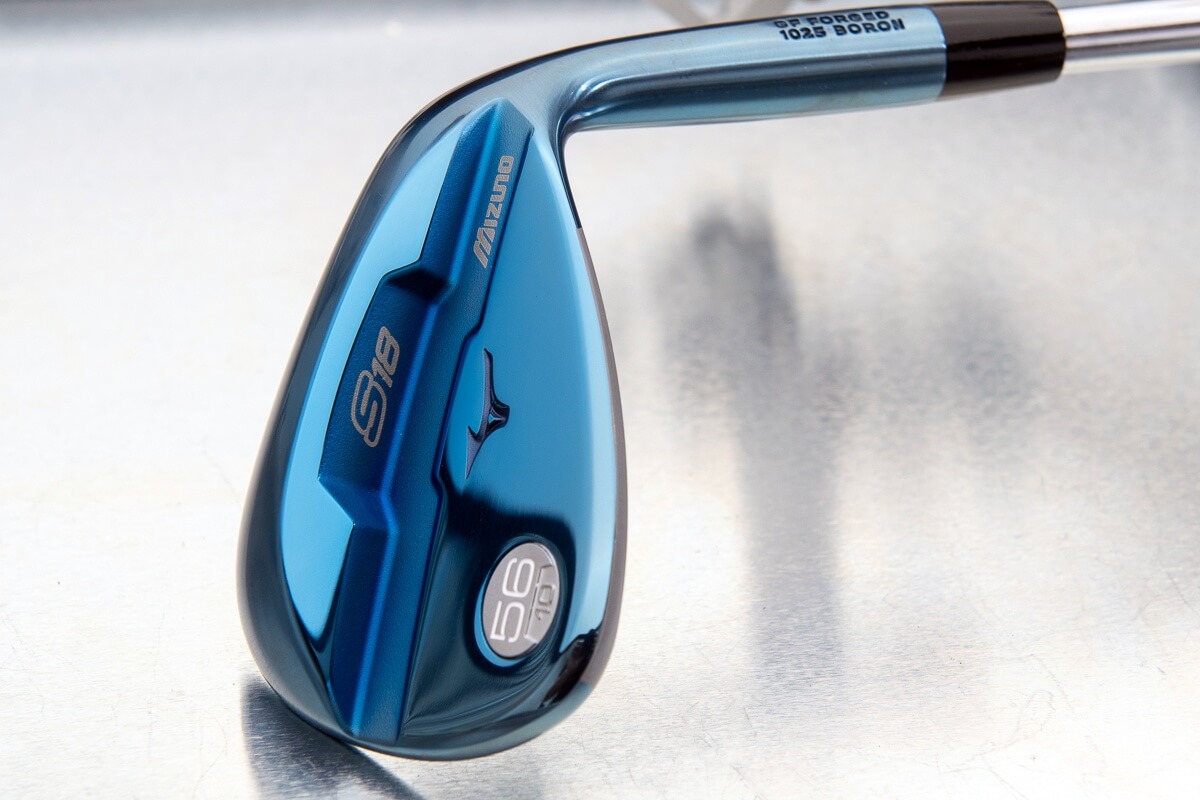
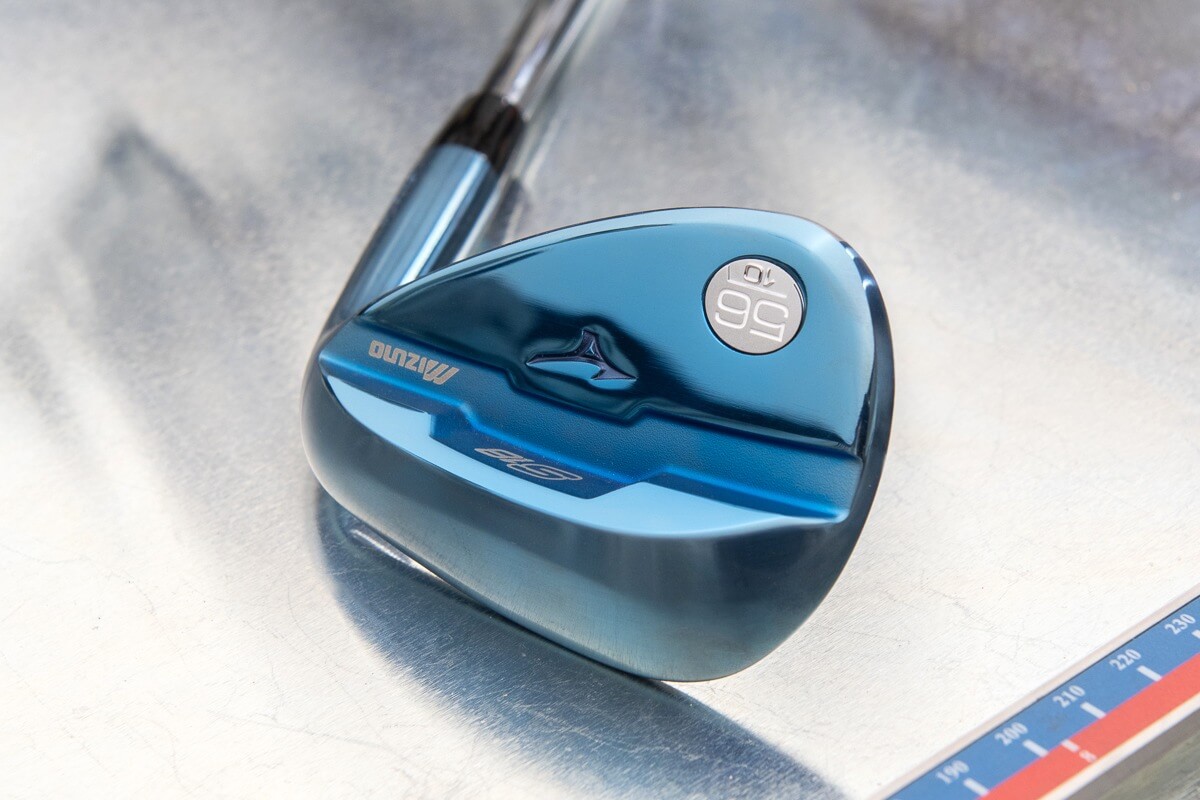










Sean
4 years ago
To clarify – it’s stated that the 919 forged is “slightly LESS forgiving” than the 900 forged?
I had read reviews displeased with the forgiveness of the 900 and the 919 is more forgiving than all those competitors.
Color me confused.